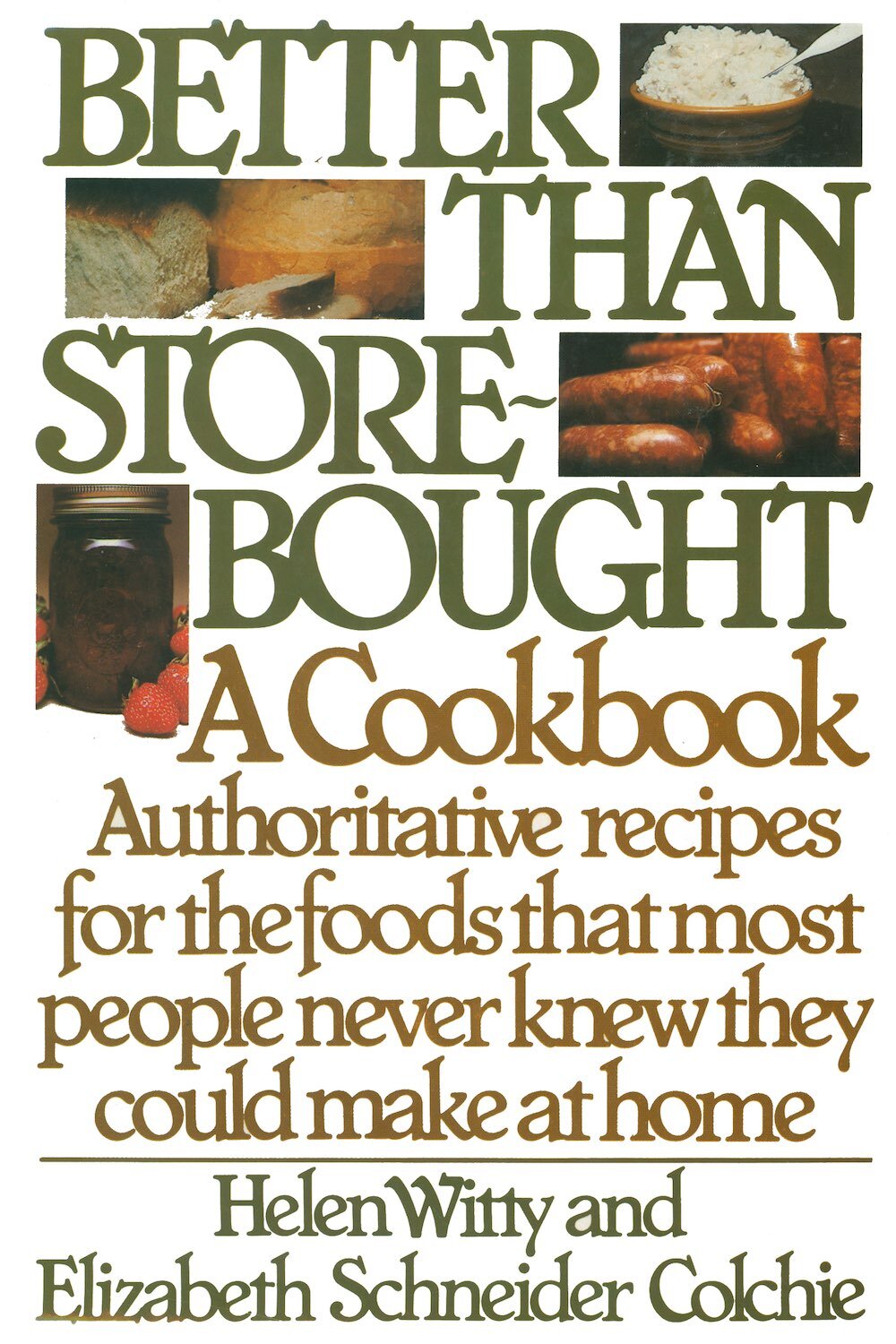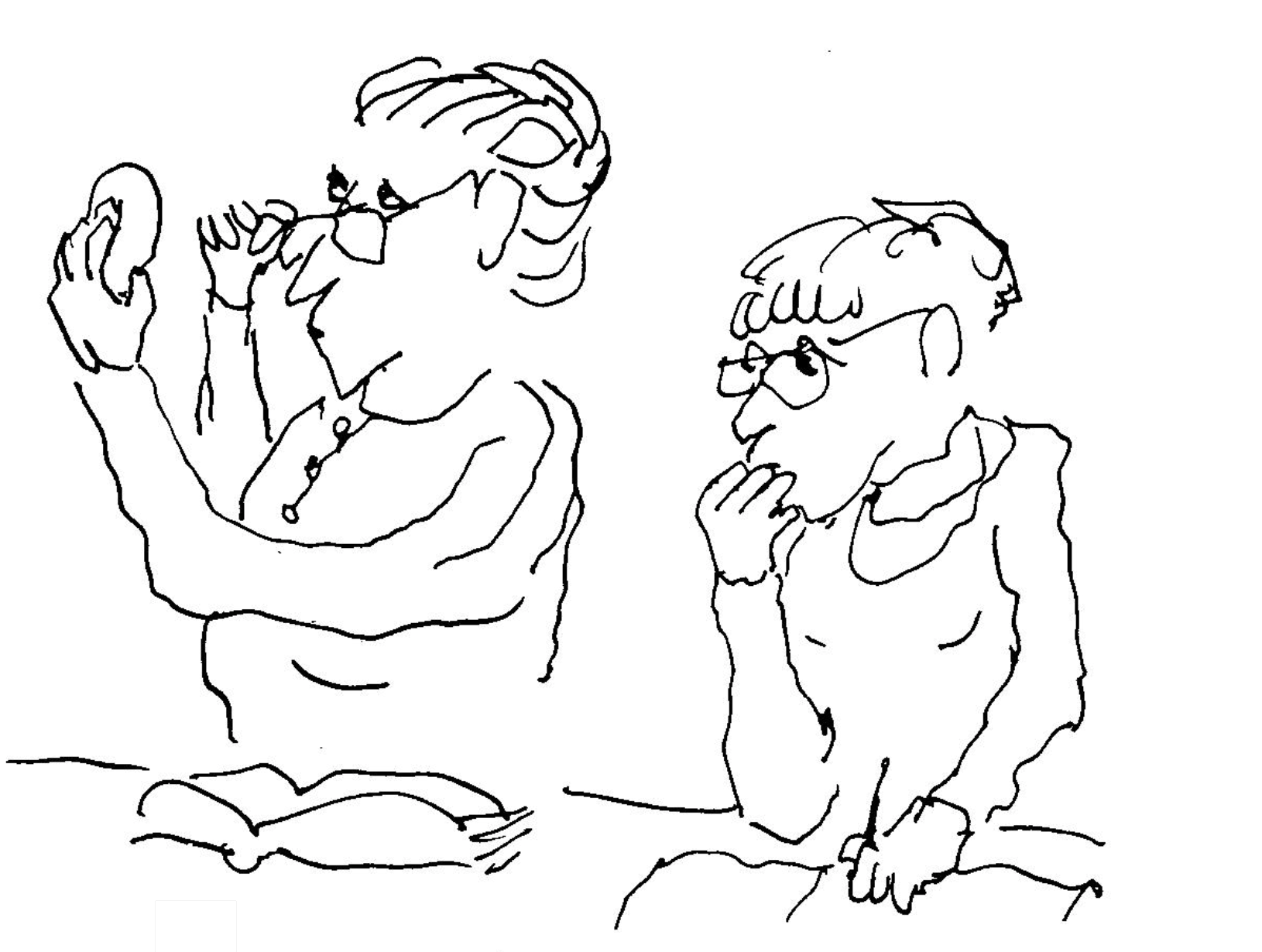When made from scratch is better than store-bought
By Matthew Cockerill
“Every now and then a book comes across my desk that makes me wonder why it hadn’t been done before. While I sometimes think that we have almost too many cookbooks these days, Better Than Store-Bought… is so different, so practical and sensible that it deserves a place on every good cook’s shelf.”
JAMES BEARD
Many cookbooks kick off with an introductory chapter that lists the kitchen basics and store cupboard essentials, the ingredients that form the building blocks for the recipes within. But what about the basics themselves? Should you be happy with finding the best quality you can from a reliable producer? Or might there be benefits to making these basics from scratch, too?
The making of a radical book
Better than Store-Bought, by Helen Witty and Elizabeth Schneider, was first published in 1979, but don’t be misled — it was a radical book for its time, and remains one now. During the post-war years, American cooking had focused on convenience, pre-preparation and processed foods, with the stated goal of liberating women from drudgery in the kitchen. With Better Than Store-Bought, though, Witty and Schneider took a bold step in the other direction, taking foods which people would normally buy in prepared form, and providing clear recipes for creating them at home from scratch, creating versions to outshine anything mass-produced.
James Beard’s review of Better Than Store-Bought in the New York Post (quoted above) welcomed it as a groundbreaking title, describing it as, “Not just another cookbook, but a book that tells you how to make (and in many cases improve upon) all kinds of products you are accustomed to buy in the supermarket – packaged products that during the process of progress-with-a-question-mark have become something less than wonderful, as well as being frequently loaded with the additives and preservatives we are so wary of these days.” Words that still resonate more than four decades later…
“For people who love good food”
The book’s introduction states that it is aimed at, “people who love good, real food, and are sad to see it disappearing.” The authors conducted their research far and wide in the making of the book, but digging out reliable recipes for commonly manufactured staples wasn’t always straightforward. Elizabeth Schneider, now retired and splitting her time between Paris and New York, notes that, “It was because recipes for most of these foods were not available to home cooks that we wrote the book. We had to do research in industrial formularies and specialized monographs to come up with the techniques for many of the recipes.”
Beard’s review extols the merits of the many recipes for preserves in the book: “Just going through the chapter on pickles and relishes and finding recipes for really good kosher-style dill pickles, true French cornichons and India relish took me back to the good old days.”
Beard, a big meat-eater, was also a fan of the many recipes for sausages and other preserved meats, noting, “You’ll find wonderful recipes for making sausages, from chorizo to kielbasa, corned beef and salt pork,” and going on to also recommend, “gravad lax and pickled herring, various dairy products like ricotta, cottage cheese, cream cheese and frozen yogurt, hard-to-find Jewish corn bread, Westphalian pumpernickel, bagels and pita, soft pretzels, and salt sticks.
Anne Witty, daughter of co-author Helen Witty, recalls other recipes that went on to become family favorites including pickles, mustards, herb vinegars, ketchup, and English muffins. On the dessert front, hot fudge sauce is an obvious crowdpleaser, but for those who have never tried making them, home-made marshmallows (“simple and delicious”) are a more adventurous option.
Lessons worth learning
Making the basics from scratch does requires a level of time and commitment, which means that for most of us it is likely to be done selectively, for the food items we care the most about – but as a means to better understand the food we eat, making basics from scratch is educational and eye-opening. I still recall my student experiments with home-made tofu – difficult to beat for frugality, and an interesting lesson in kitchen chemistry, too! With the current concerns around ultra-processed foods, Schneider and Witty’s book is also, after more than 40 years, still very much “on trend.”
For the two authors, this was a successful early collaboration, for which they won a James Beard Foundation Award. Elizabeth Schneider went on to publish acclaimed reference works including Uncommon Fruit & Vegetables (1989) and Vegetables from Amaranth to Zucchini (2001), both of which will also soon be available via ckbk. Helen Witty went on to a similarly successful career as a writer and editor, winning another James Beard Foundation Award for Mrs. Witty’s Monster Cookies. Her late husband Dick Witty was also an enthusiastic cook, known for his Angel Food Cake recipe, which was reprinted in Richard Sax’s Classic Home Desserts.
Better Than Store-Bought is now available in full on ckbk.
Helen Witty and Elizabeth Schneider Colchie during one of their many recipe conferences. Drawing by Carter Jones.





